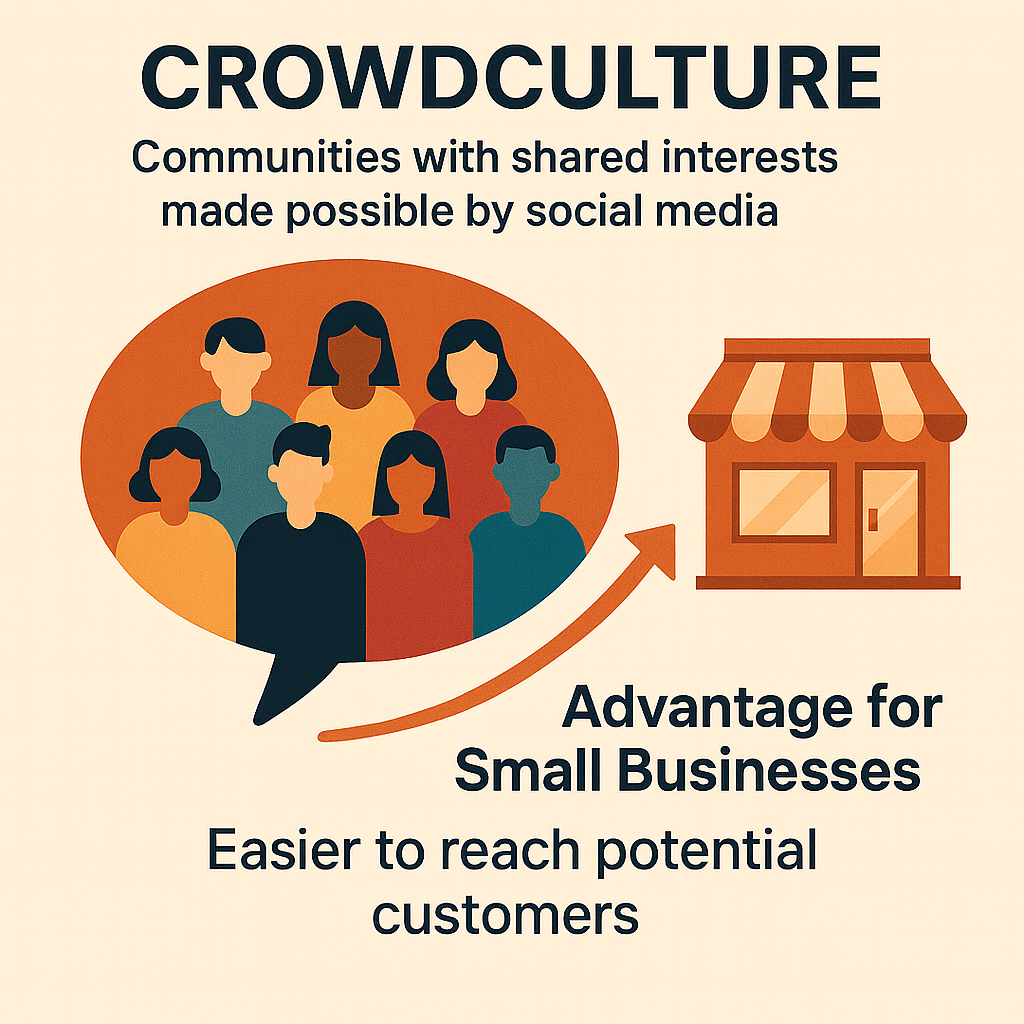The New Marketing Advantage
Do you know how to use it?
Crowdculture is a term that Douglas Holt introduces in the article “Branding in The Age of social media”. It describes how communities that were once isolated have formed groups where they share common interests. What makes crowdcultures feel new today is the impact of social media.
As a marketeer, I’ve noticed that crowdcultures has existed for a long time, but the rise and rapid growth of social platforms have allowed it to scale an unprecedented pace, turning niche communities into global movements.
The advantage for Small Businesses

This new tendency can be seen as an advantage for small businesses. It is now more financially accessible to reach potential customers, because crowdcultures naturally gather people with shared interests. For example, finding a group that enjoys afternoon coffee parties is much easier than before. This is a huge benefit for small businesses, since they can connect directly with these communities to offer a promotion or simple showcase their brand, reducing marketing spend while increasing impact.
For example, imagine a bakery that specializes in gluten-free desserts, before reaching health conscious or gluten intolerant customers required expensive advertising. Today thanks to crowdculture, there are Facebook groups, TikTok communities built for this specifically niche. This targeted approach lowers costs and makes marketing much more efficient.
Your next movement
I have concluded that you, as a small business owner, don’t stress out about big advertising budgets to reach your customers, focus on identifying online communities where your ideal customers are already active. Take the time to look for them on Facebook groups, Instagram profiles or even TikTok trends, you can grow there more than you think.


